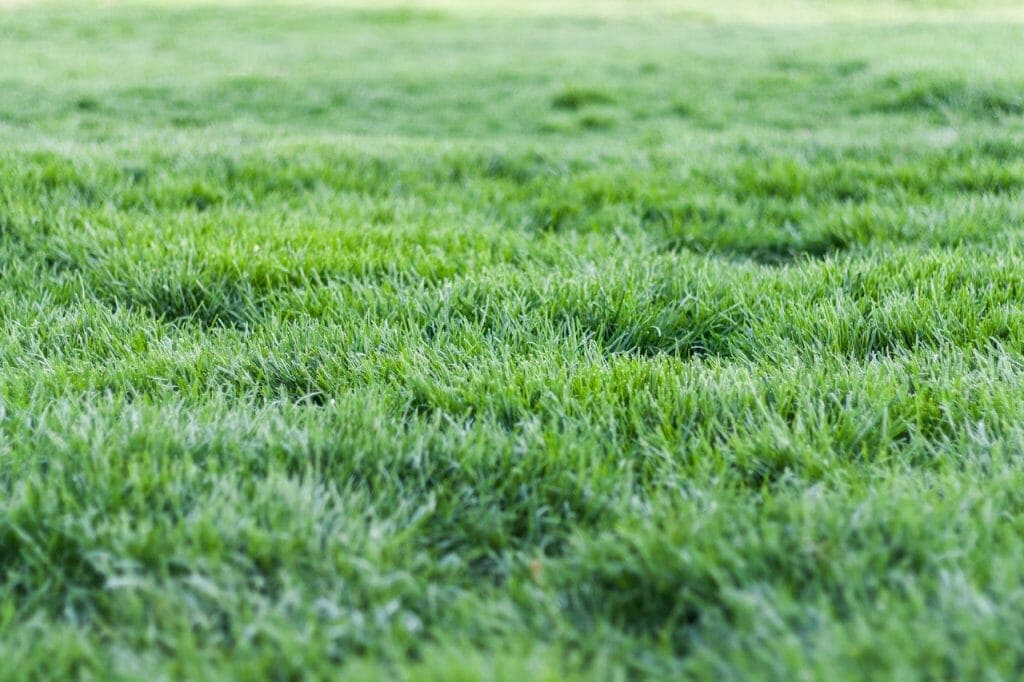Written by Herb Kirchhoff and published on https://homeguides.sfgate.com/.
Autumn is the ideal time to tackle perennial lawn weeds, such as daisies, dandelions and plantain, sowing grass seed in their place. There is still time for the grass seed to germinate before winter.
Ideally, tackle the weeds after a spell of rain, so it’s easier to push the weeder or trowel down into the soil to dig out any roots. Remove any large clumps of spreading weeds, such as clover and buttercups, using a hand fork.
How to Reseed a Lawn With Weeds
If you are faced with a neglected lawn that’s partially dead and is being taken over by weeds, you may be able to renovate it. Restoring a deteriorated lawn may be possible if the weeds and dead spots cover less than 40 percent of the lawn area. Renovation of a weedy lawn involves more than just mowing down the weeds and throwing some grass seed over the lawn.
Kill the Weeds
The best time for lawn renovation throughout the U.S. is mid-August to mid-September. Most weeds have not yet dropped their seeds and there will be little new weed growth. Also, reseeding at this time will give the new grass a chance to establish itself before going dormant for winter. Get rid of the weeds by manually pulling up large, spreading weeds. Follow up by applying a selective herbicide product that kills common broadleaf lawn weeds while not harming grass. For tough grassy weeds, like quack grass or crabgrass, use a nonselective herbicide such as glyphosate on the spots where these weeds have established themselves. Normally, all weeds will be dead within two weeks. Apply another herbicide dose in three weeks to get newly sprouted weeds.
Water the Site
If you have had a dry summer with below-normal rainfall, you need to replenish soil moisture before preparing a seedbed. Give the entire lawn a thorough watering, soaking until water has penetrated to a depth of at least 6 inches, then allow the surface to dry for a day or two before starting soil preparation.
Remove Thatch
Most deteriorated lawns have a built-up layer of dead and partially rotted grass stems, roots and rhizomes just below the green grass leaves. This is known as thatch, and it must be removed before reseeding so water and fertilizer can reach the new seed. For small lawns, you can remove thatch with a garden rake. For large areas, go over the lawn with a power dethatcher, also known as a vertical mower or power rake. These machines can be rented from garden centers. Remove the clumps of matter left by the machine with a garden rake and level the soil by raking it.
Feed & Seed
The soil nutrients most important to healthy grass plants are nitrogen, potassium and phosphorous. Supply these nutrients by applying a commercial fertilizer formulated for starting lawns and lightly rake it into the soil before you reseed. Buy a grass-seed blend suited to your climate and local conditions and spread it over the lawn with a drop spreader or rotary spreader. Absent a different recommendation from the grass-seed grower, spread the seed at a rate of 2 pounds per 1,000 square feet on a lawn with substantial plots of live grass and 3 pounds per 1,000 square feet on bare soil. Water lightly once or twice a day to keep soil moist but not sopping wet. Don’t mow until the new grass gets 3.5 inches tall.
Original post here https://homeguides.sfgate.com/fix-dead-grass-fertilizer-50401.html.



